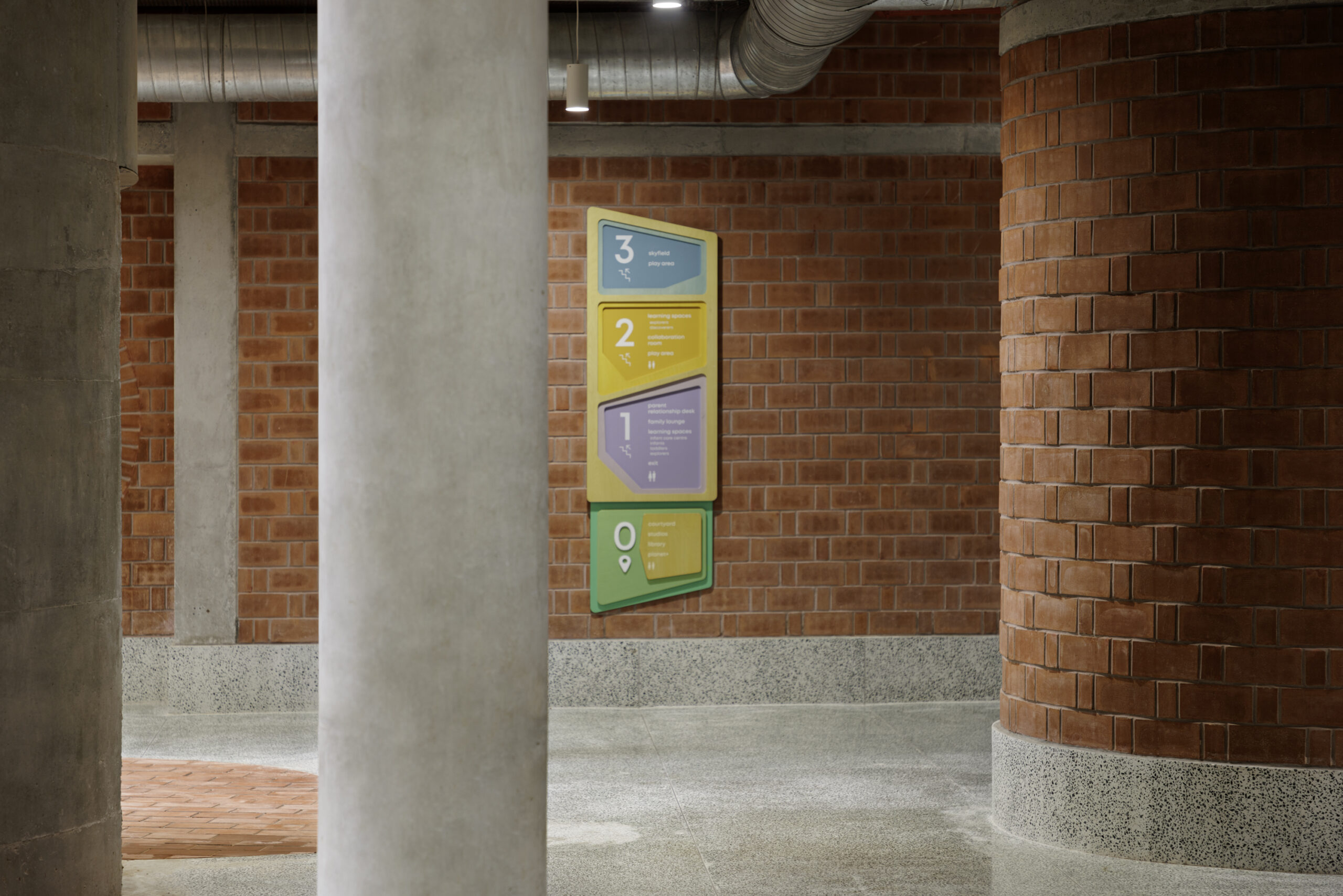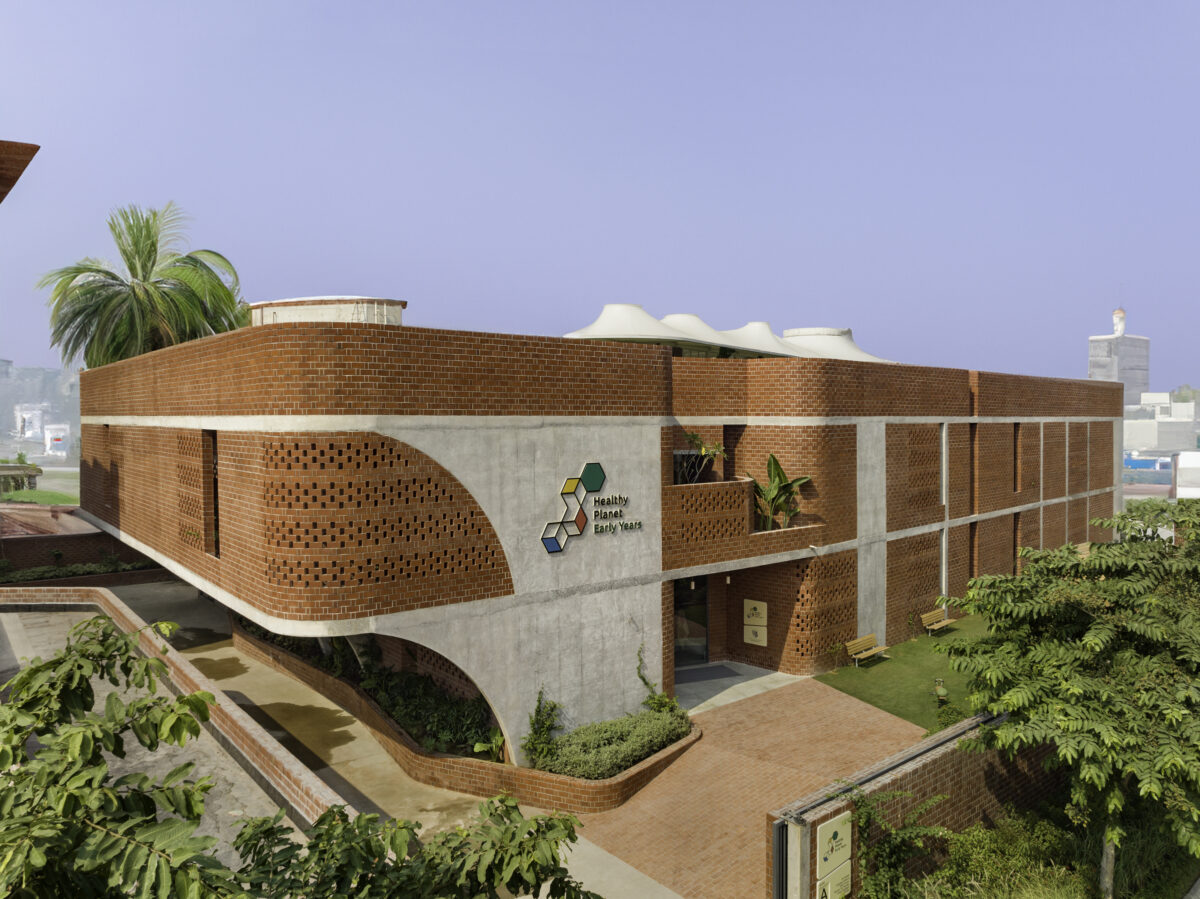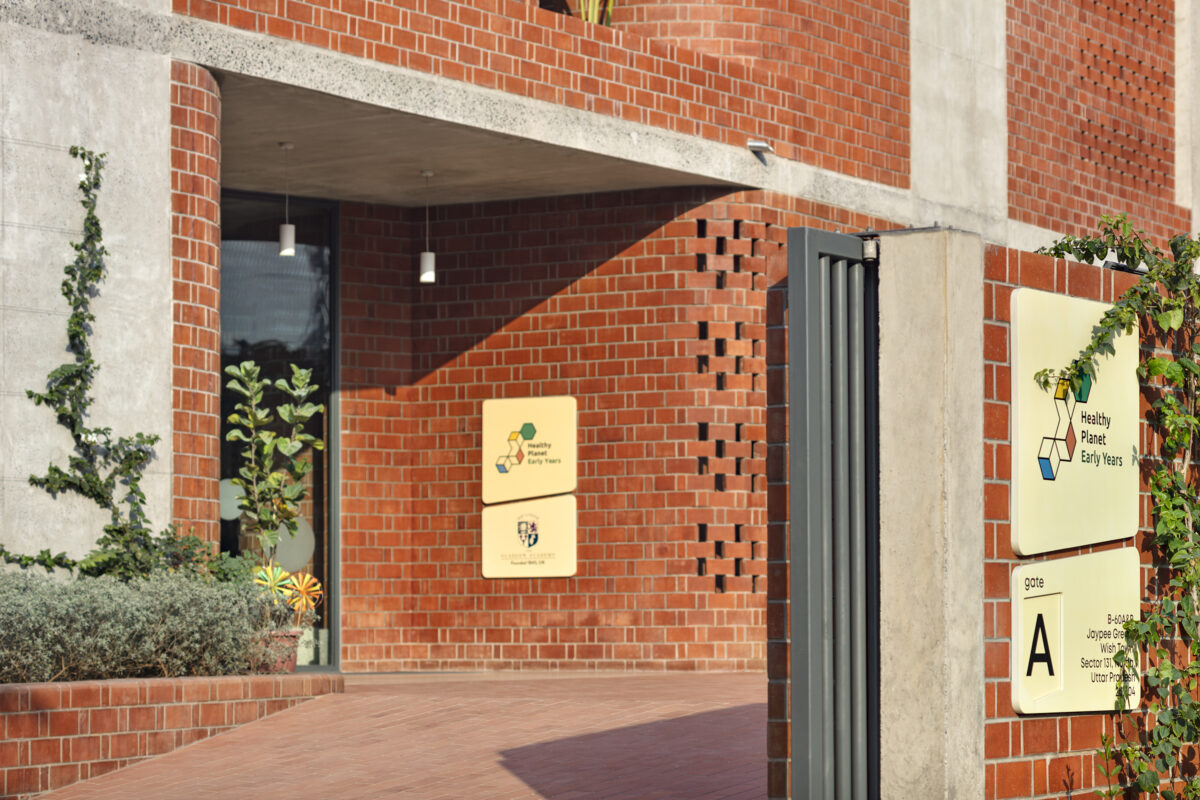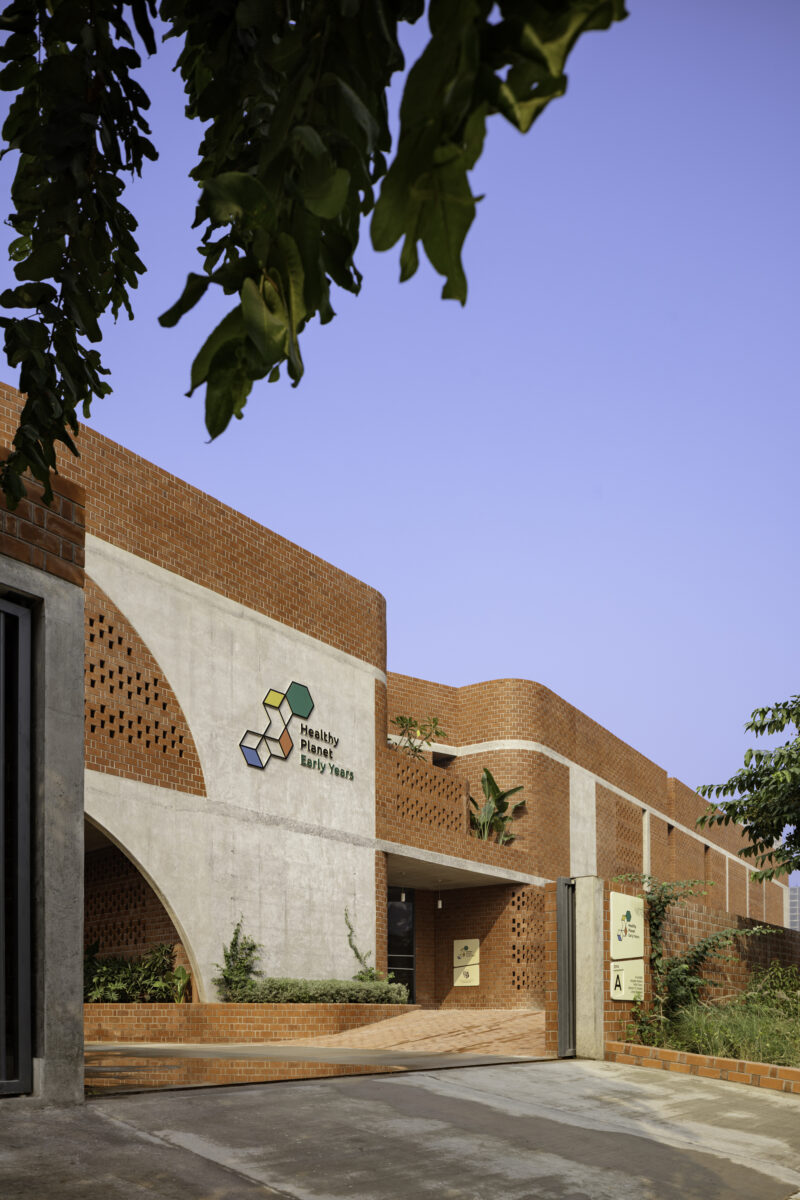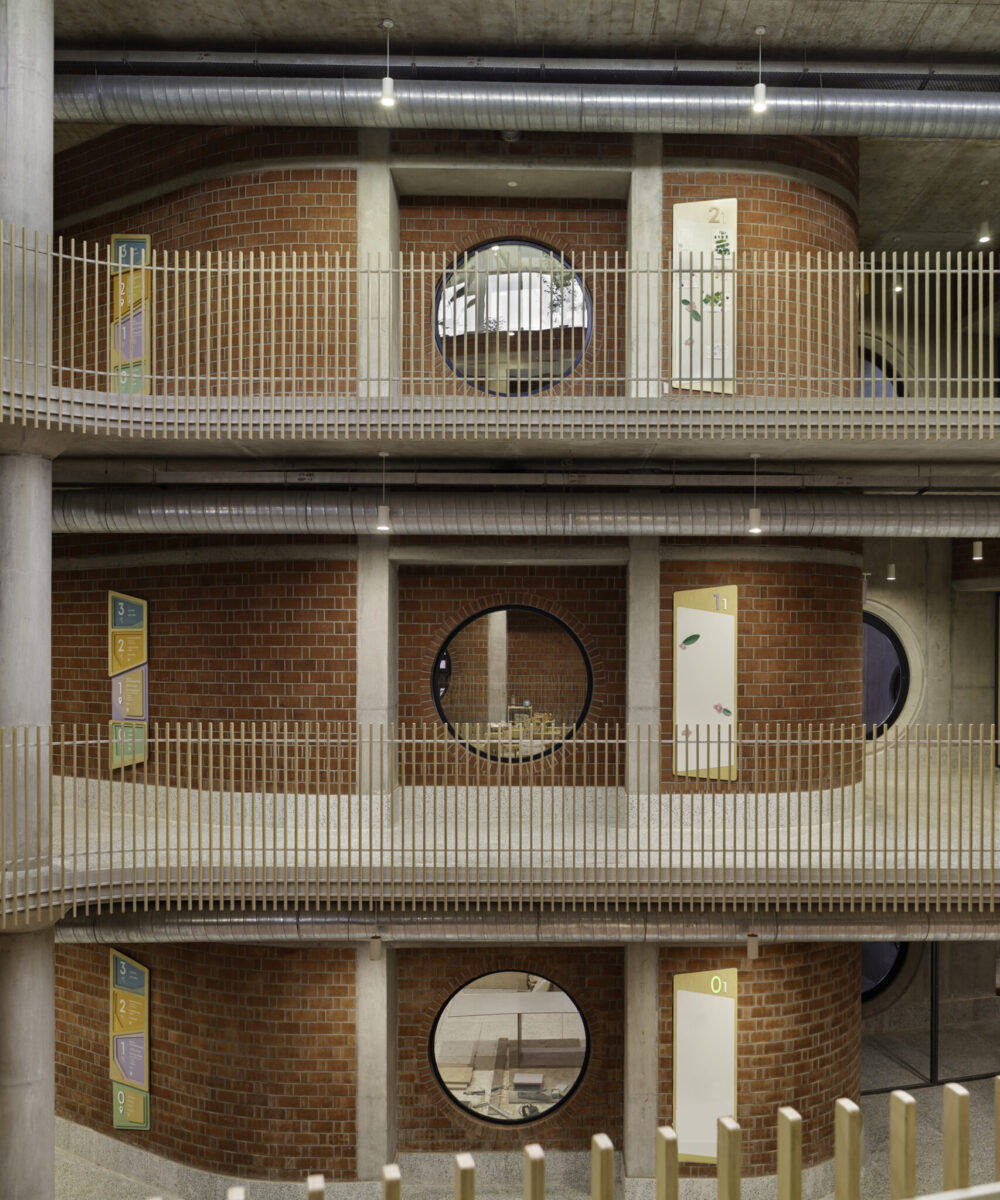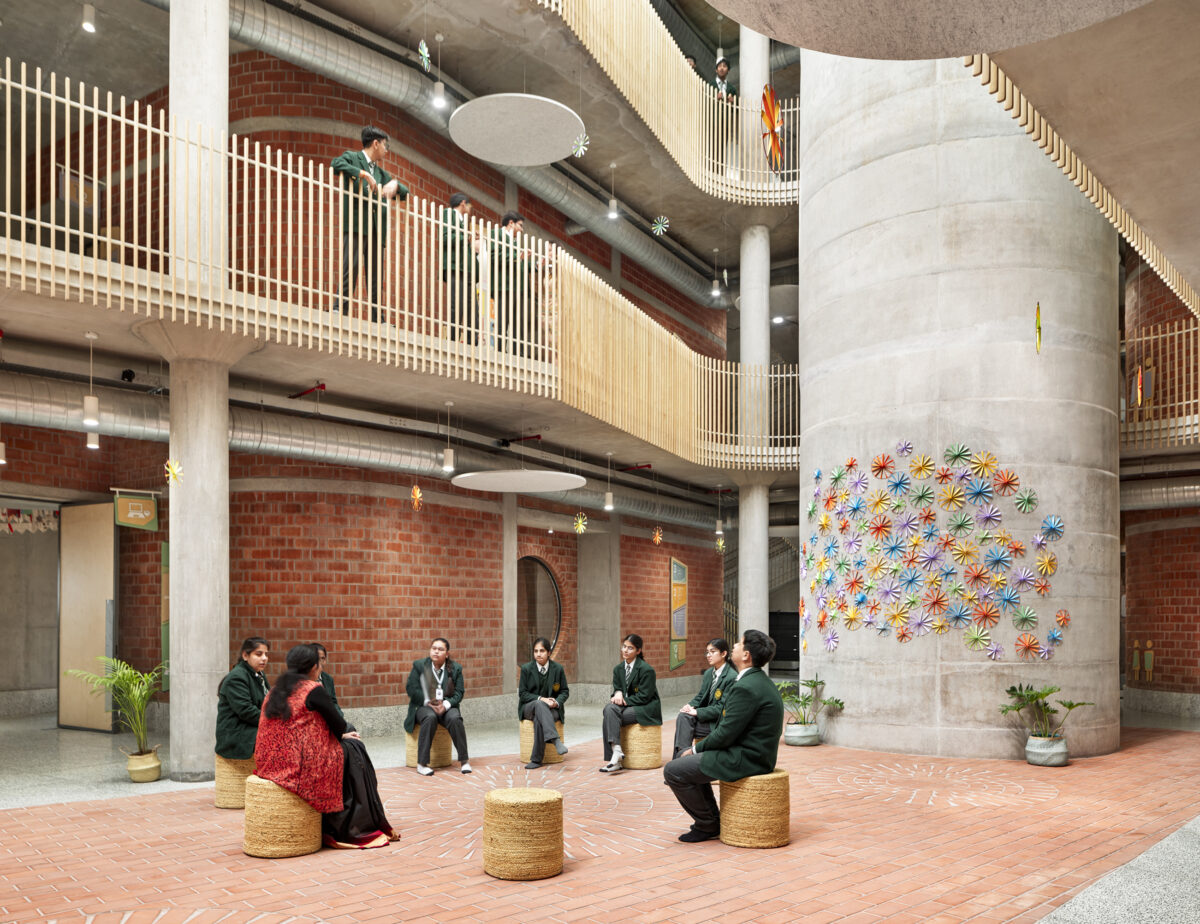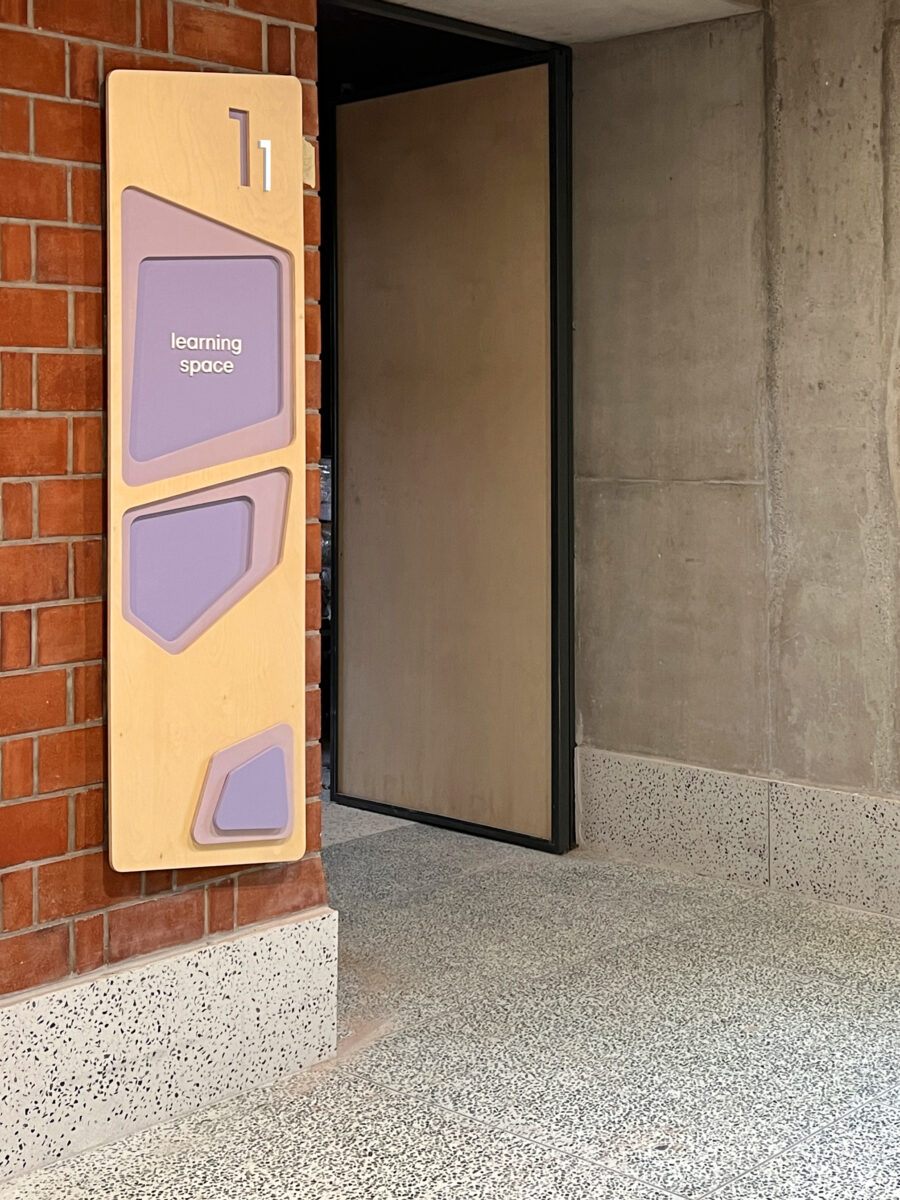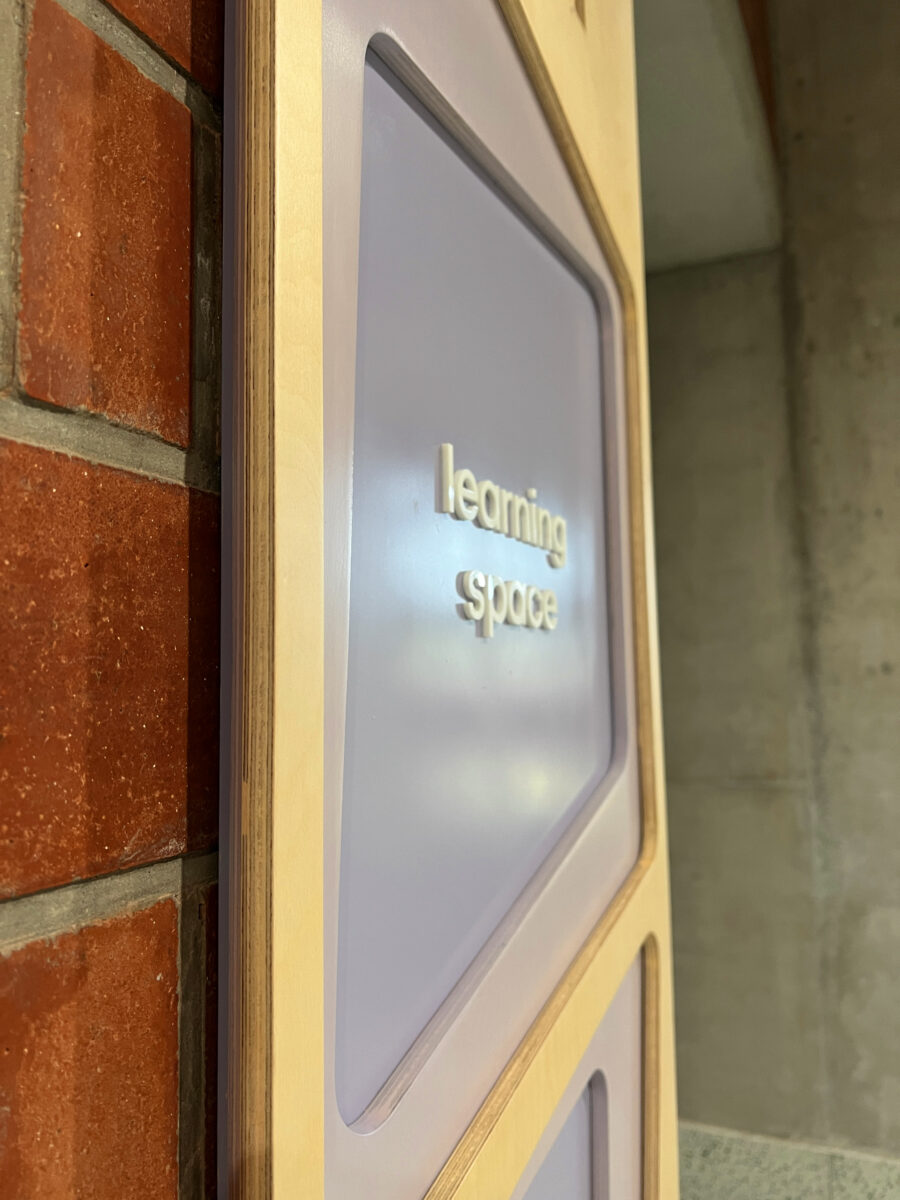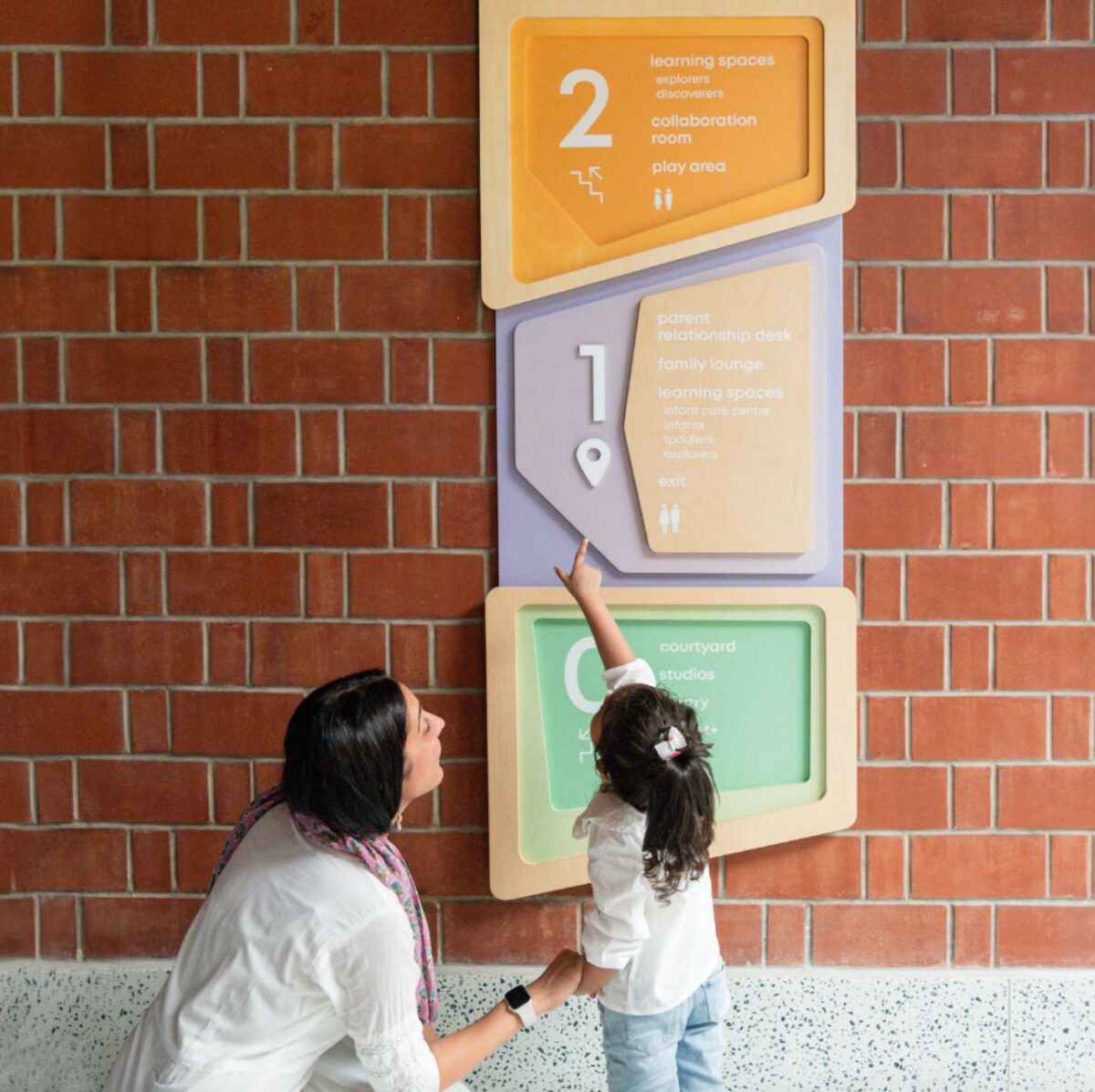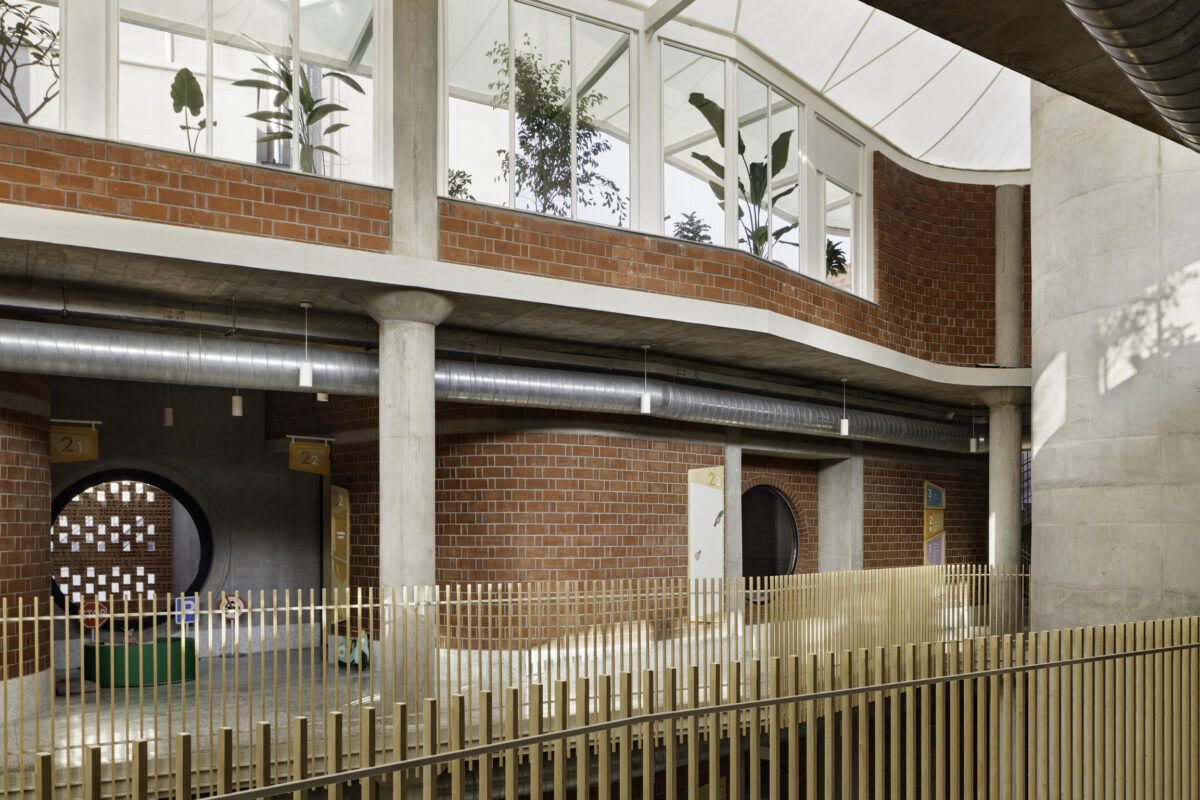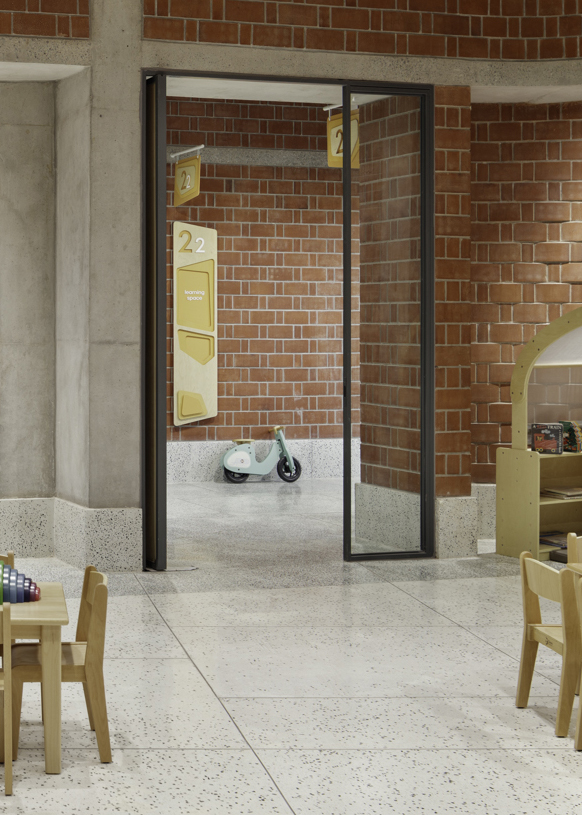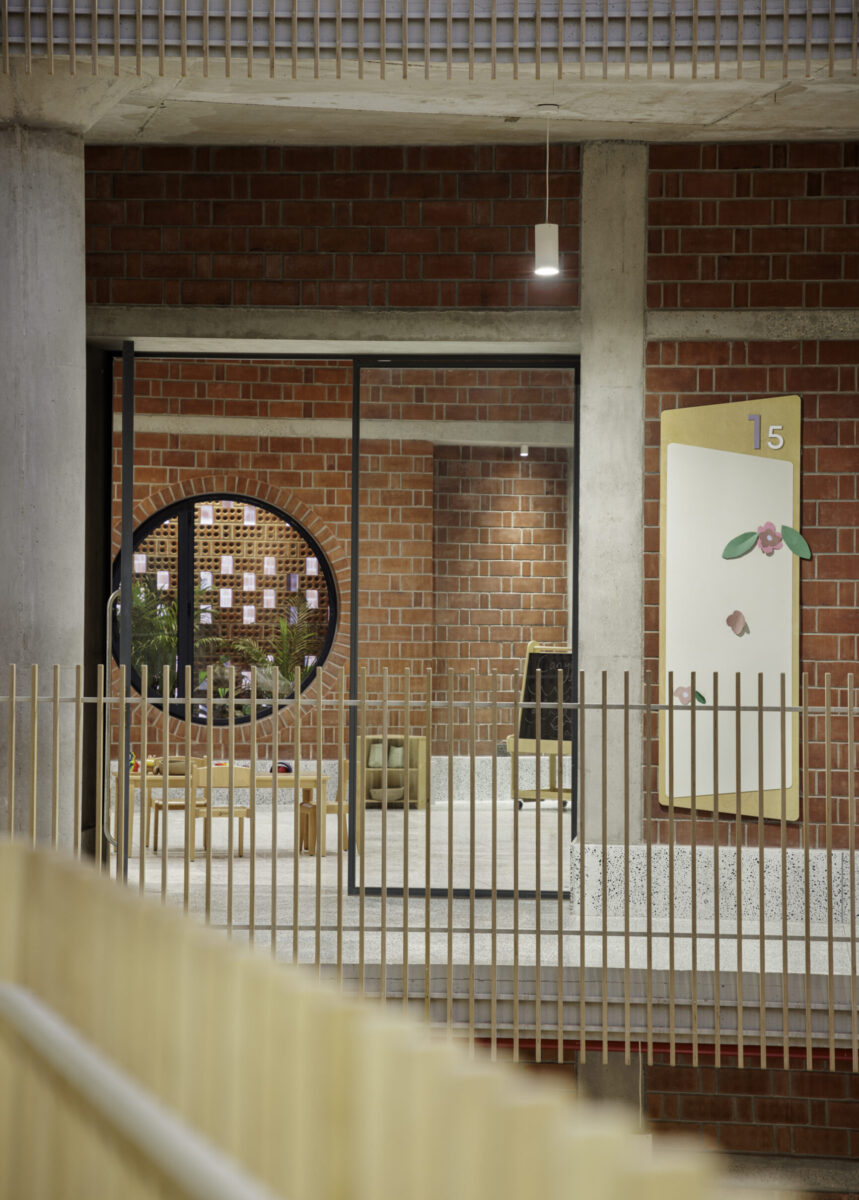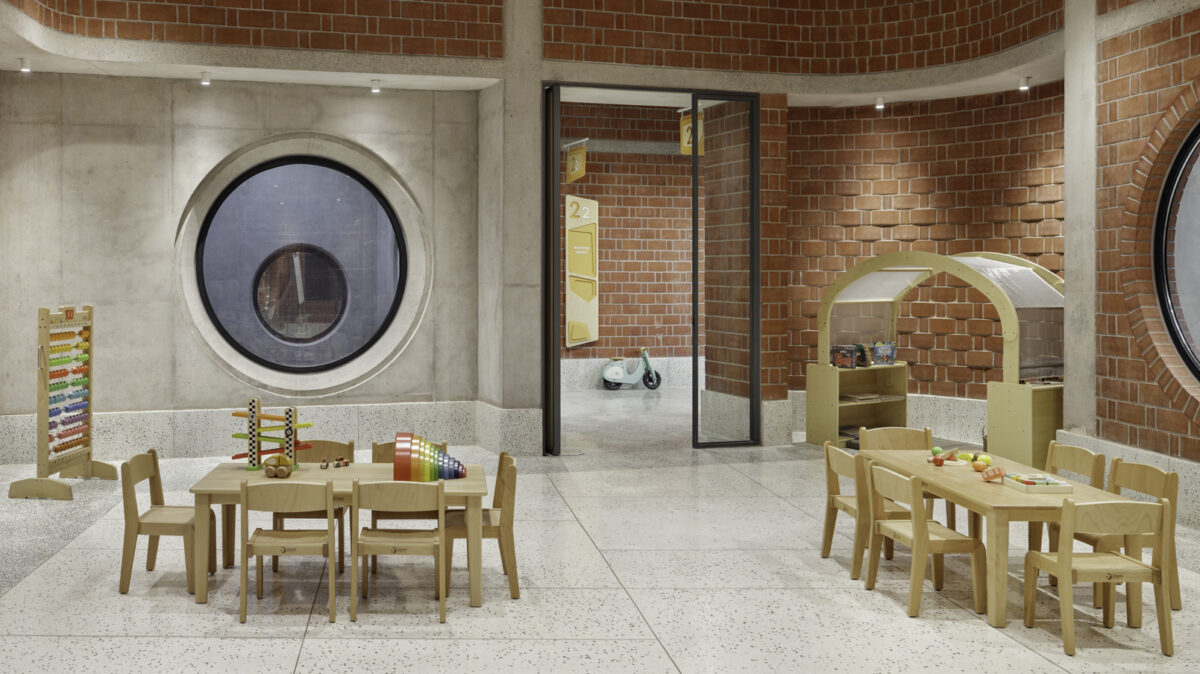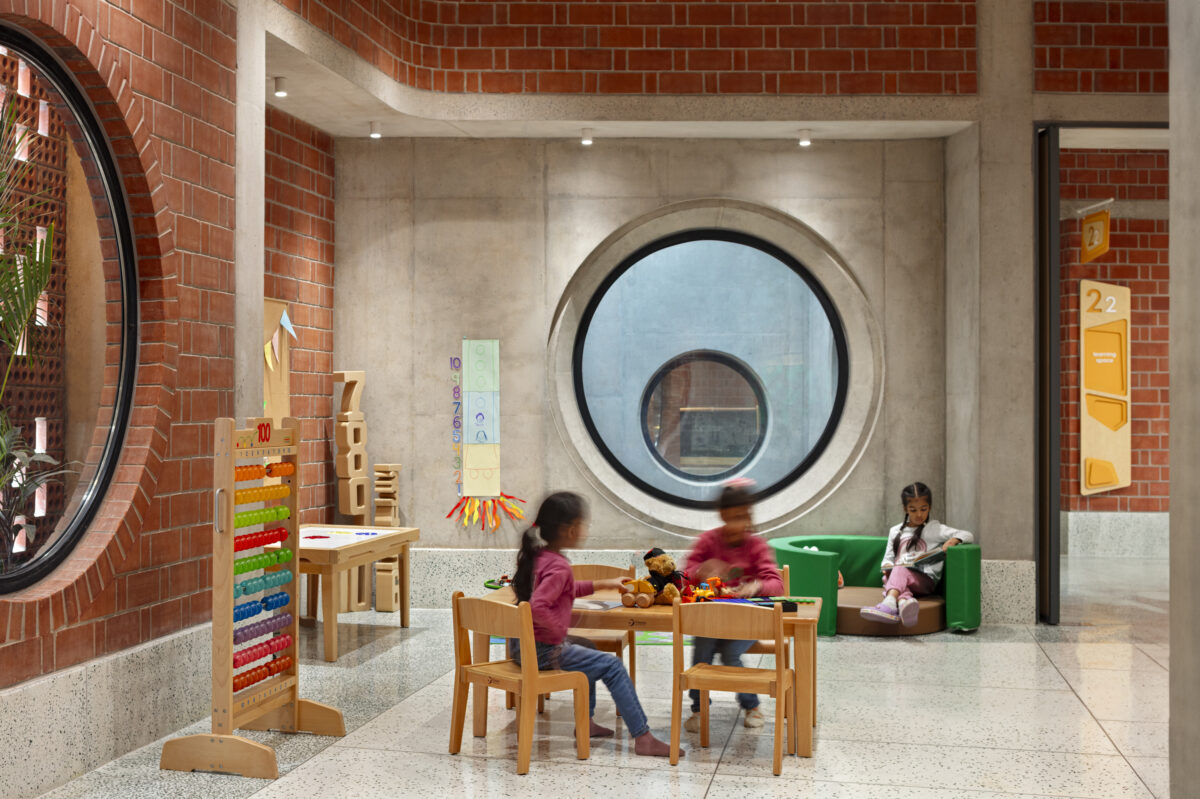award for this project

Silver Medal in the Signage category
11th Lusophone Creativity Awards, 2nd Quadrimester
Lisbon / Portugal

Silver Medal for Signage System
14º Brazil Design Award 2024
Sao Paulo / SP / Brazil

Silver in the Placemaking and Signage category
10º Design Award Bornancini (2024)
Porto Alegre / RS / Brazil
datasheet
-
client
Nehru World School -
project
Healthy Planet School Early Years -
year
2023 -
location
Noida / India -
architecture
vir.mueller -
photography
Andre J Fanthome and coleção /STUDIOMDA and Healthy Planet School -
description
The architectural design by vir.mueller for the Healthy Planet School Early Years building in Noida, India, is a true refuge from the busy outside world for its students aged 12 months to 8 years, together with their teachers and families. The building is organized as a set of organic cells, or learning spaces, surrounding a courtyard. Exposed brick, concrete, and coloured terrazzo are the primary materials, and the architecture provides a presence both serene and robust. The biggest challenge for us here was to design a wayfinding system that was impactful and still fully integrated with the beautiful architecture. Our inspiration was the architects’ cocoon concept – an environment that is protective yet welcoming and nurturing. Our design incorporates the notions of transformation, belonging, and singularity.
The wayfinding system elements demonstrate personality, with unconventional geometric shapes, layers of offset and overlapping plywood and with applications and finishes of different colours and opacities. These compositions incite movement along a gradient with chromatic patterns that code the floors and enhance the material texture. The graphic system was designed to emphasize the cocoon’s sense of comfort, warmth and a soft touch. Some pictograms pose as three-dimensional by making use of the displaced layers to create a more immersive visual experience.
Together with guiding and informing, the solution stimulates curiosity and interaction among young learners in the early stages of development. In addition to the signage at adult height, special and more playful items are placed at children’s height to both connect with and surprise them, such as pictograms of children’s toilets and an opening in the classroom indicator panel that hides an unexpected element just for them.
This approach to spatial communication contributes to HPS’ welcoming and inspiring atmosphere, and reflects the Institution’s mission and values. As a result, the experience is memorable and transformative, compelling a response in everyone who passes through.
